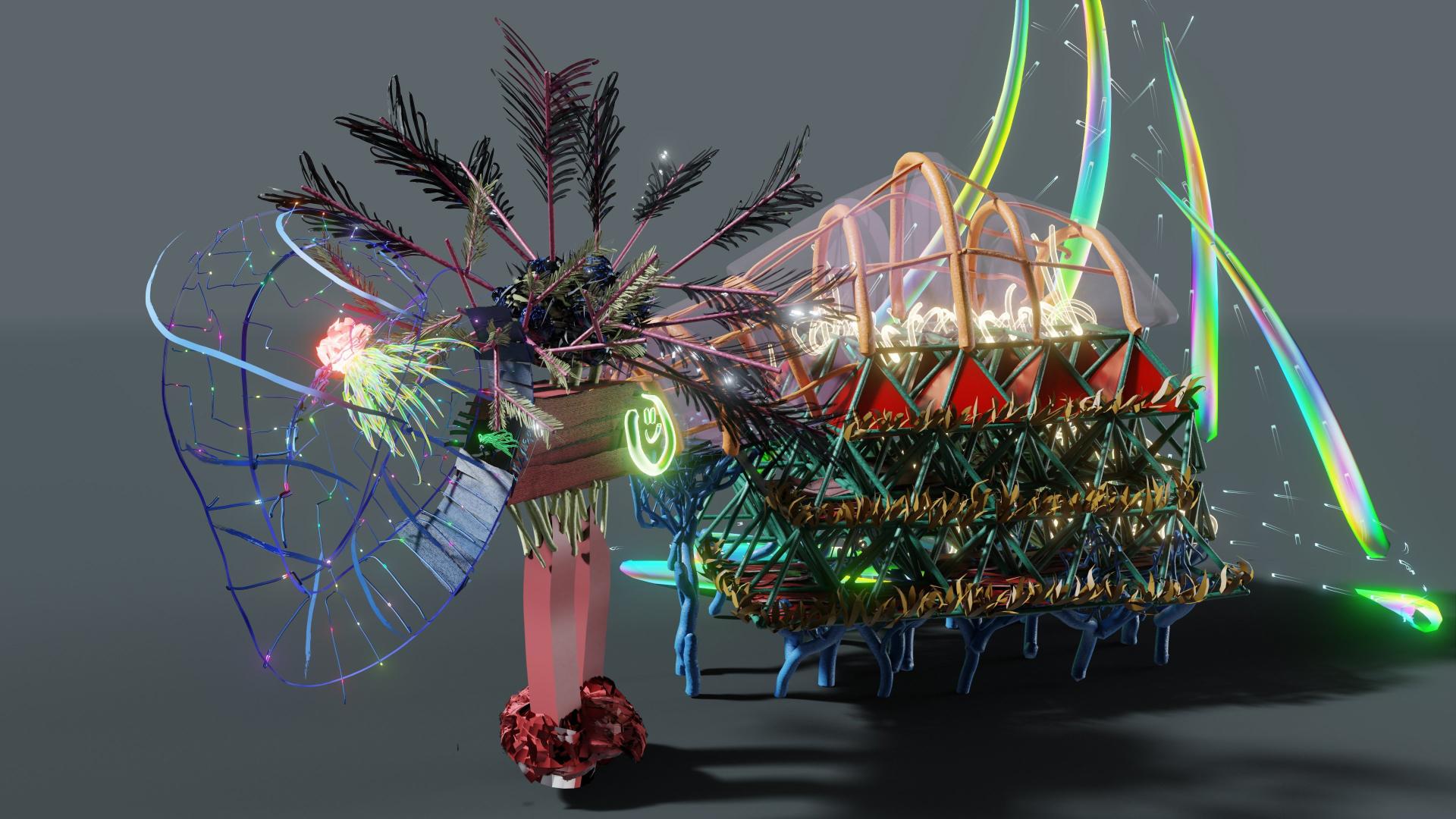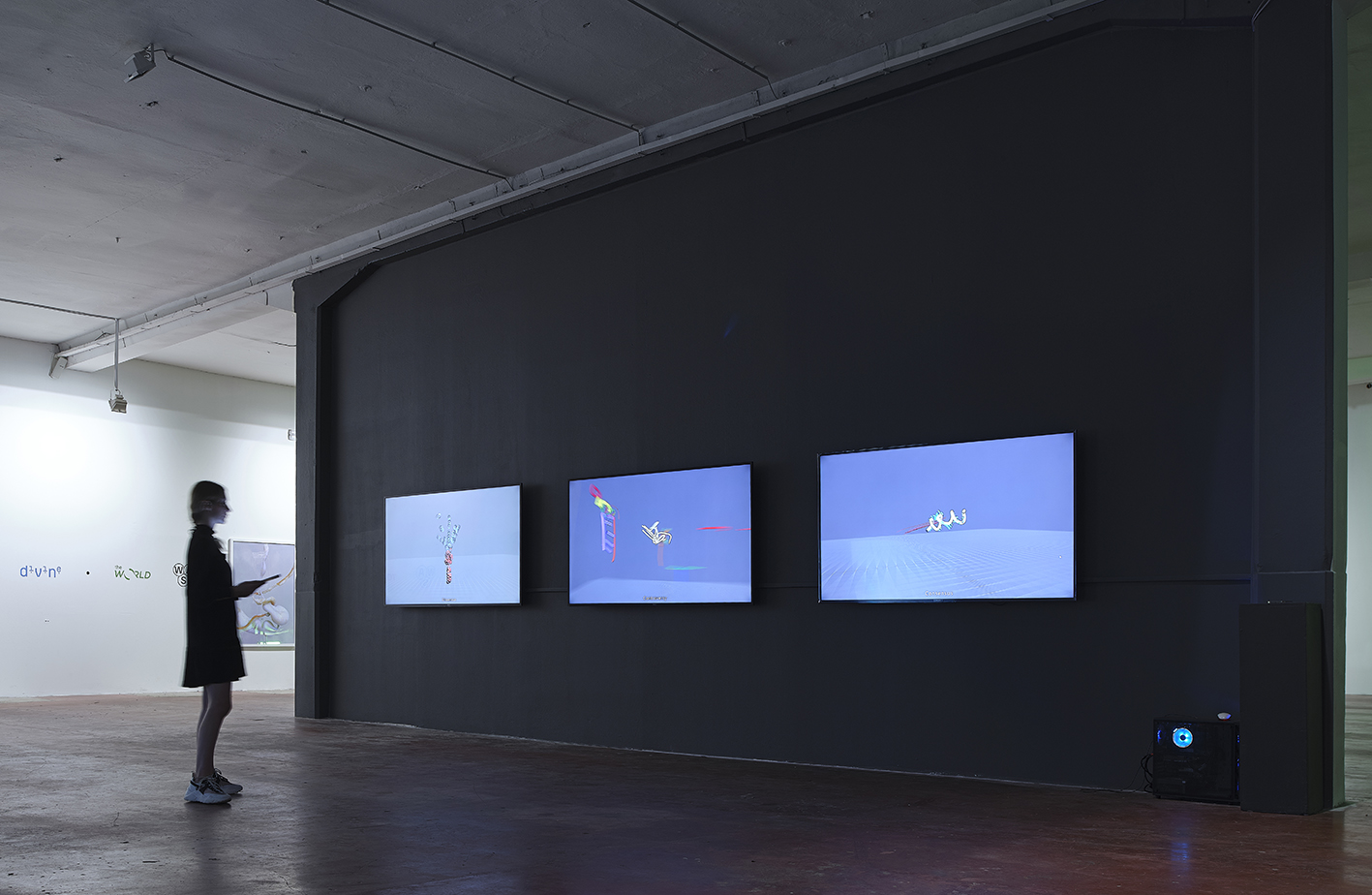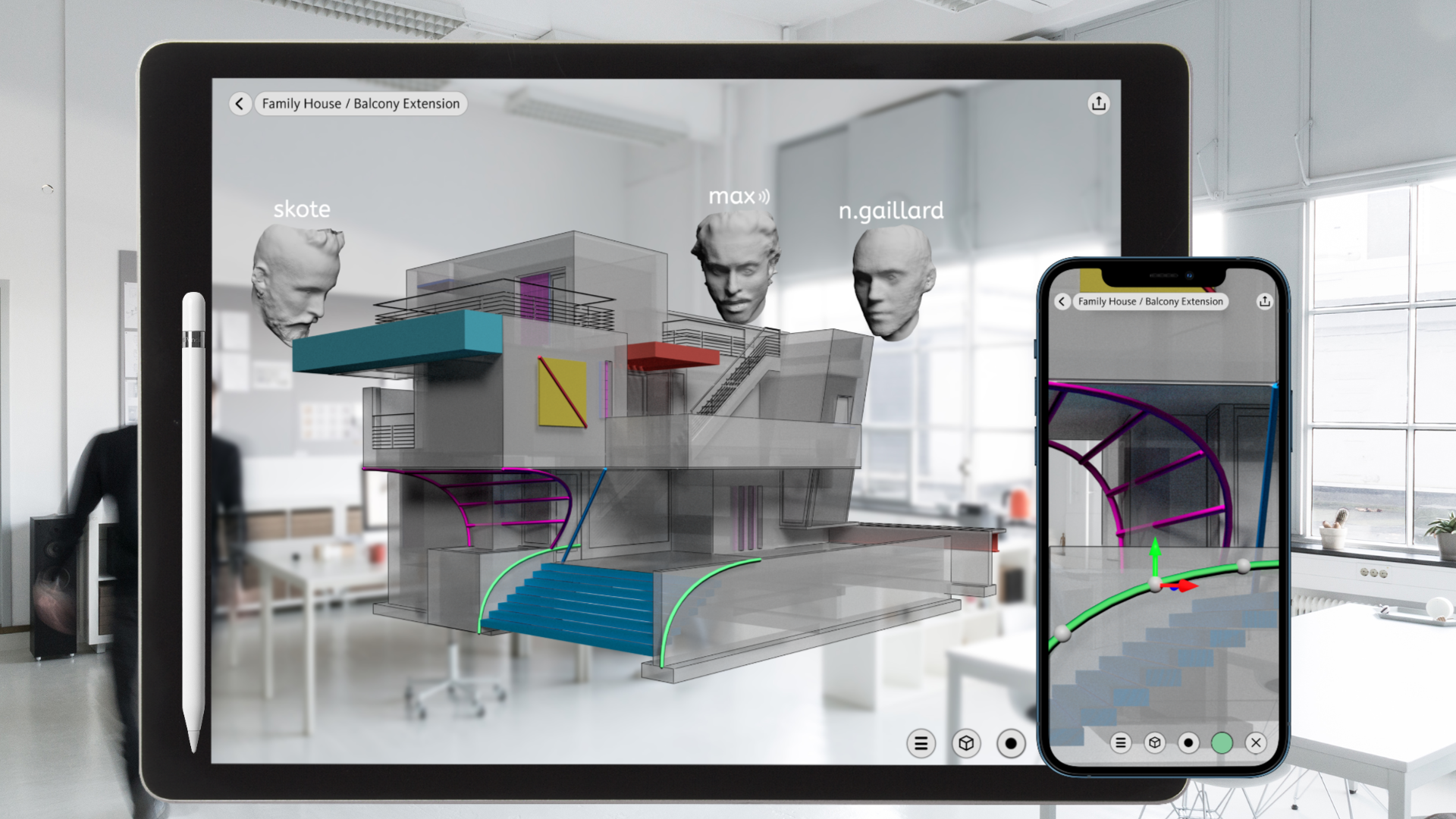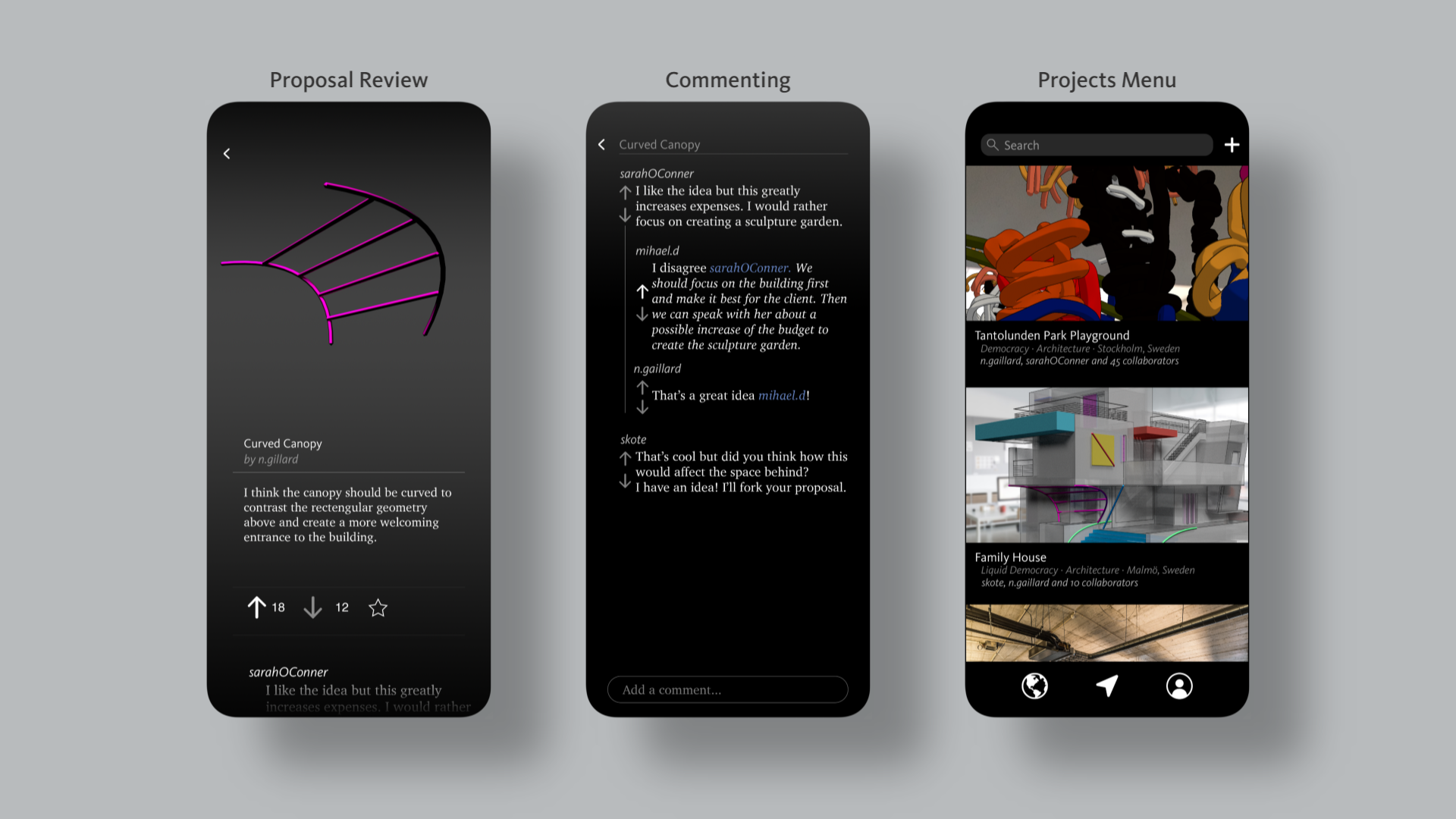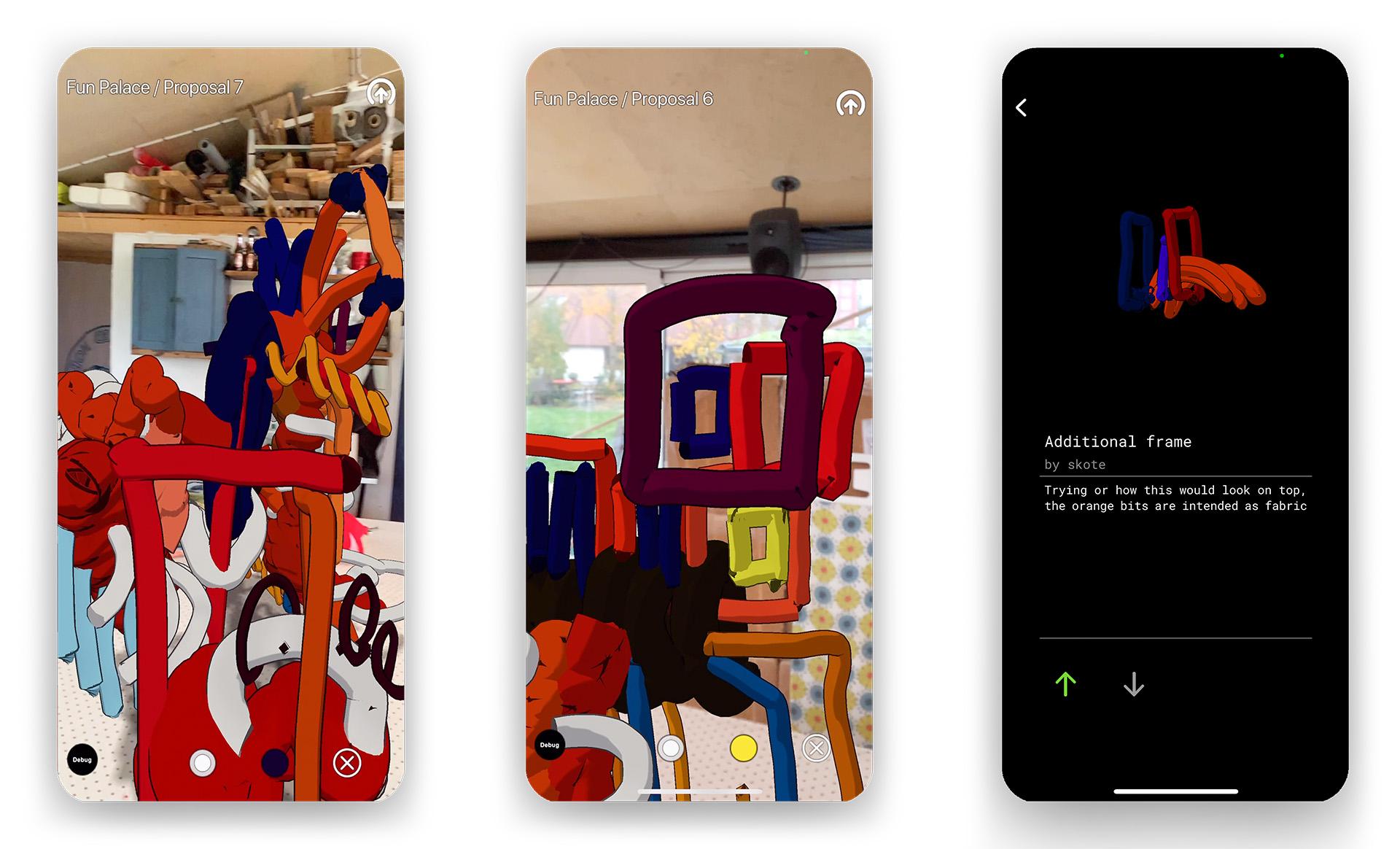Skiljelinjer
Basic information
Project Title
Full project title
Category
Project Description
Skiljelinjer is a tool for cocreated design and a new design methodology. It is based on a playful combination of new design technologies and new decision-making practices in collaborative design. Through a custom-built augmented reality app, citizens design together in physical spaces, these designs are voted on and can be ranked by both popularity and controversy, ensuring that all sides are heard. The project makes citizen participation in the urban environment more fun and engaging.
Geographical Scope
Project Region
Urban or rural issues
Physical or other transformations
EU Programme or fund
Which funds
Description of the project
Summary
Skiljelinjer, Swedish for "lines of demarcation", is an architectural research project exploring new tools and decision-making frameworks for collaborative design processes. Words like cocreation, participatory design and citizen initiative are common used buzzword, but few know how to actually conduct these processes in a fruitful manner. Design processes inviting citizens to participate are often rife with conflict, and lead to poor results. There is a strong need to design better collaborative design process.
Skiljelinjer make use of a custom-built, open source augmented reality (AR) design app, that works on all smartphones. The methodology is based on runnign multiple workshops in different contexts with different user groups. Each workshop uses the app to cocreate a design for an urban intervention, departing from a brief and specific decision-making framework. The users’ design together, in AR, in the real space. All users see what the other designs in realtime, and they can comment on, vote on and fork proposals. The use of AR allows the virtual proposals to be situated in the physical environment they are designed for.
After each workshop session, the proposals are filtered depending on their ratio between upvotes and downvotes, which allow us to find either the most popular proposals, the least popular, or the most controversial. This way we can experiment with different decision-making protocols in deciding the outcome of the collaborative process. This is used to go outside common notions of the rule of the majority, and make sure that all voices are heard. In many cases, the most controversial proposals are the ones that need to be considered properly, instead of just relying on those with most votes for.
The result of the workshops are then used as a basis for an architect or designer to realise the design. In that way, Skiljelinjer is both a new design tool, and a whole new methodology of creating collaborative design.
Key objectives for sustainability
Cocreated spaces are cared for
A urban space that has been cocreated by the neighbours has a higher usage than spaces created top-down from the municipality. The neighbours feel excited about caring for the space they were a part of designing, and will make sure to handle it well. It has also been shown that urban spaces where the your have been invited to cocreate the process suffer less vandalism. The would-be vandals feel ownership over the site, and respect and care for it. These two factors taken together lead to fewer repairs and upkeep needed, which reduces the environmental footprint.
Less waste
Contemporary design practices are often wasteful in terms of materials produced to facilitate the sketching process. Models and prints need to be produced in large numbers, which are immediately discarded after their first use. These models and documents are however necessary for an engaging and transparent design process. Moving these to the digital realm, as Skiljelinjer does through augmented reality, directly reduces the environmental footprint by architects, designers and urban planners.
Localizing the design process
A localized cocreated design process is a process where the participants reside near the site and have deep knowledge about it. This not only results in less necessary travels to participate in the design process, but it also results in a better understanding of the site and its unique needs. This in turn leads to less wasteful practices, by making sure that the people who know a site have the most say about what is designed for it.
Key objectives for aesthetics and quality
For urban design, the ones to decide its aesthetic qualities should be its users. Contemporary urban design is in large parts decided on by architects and designers with no immediate connection to the sites they design for. Skiljelinjer opposes this by proposing a methodology where the citizens that actually use a site get to have collaborative control over how it is designed. We believe canonical design aesthetics are antithetical to a participatory urban environment. Instead, we believe that the real users of an urban environment should be in charge of its aesthetic qualities.
The technical threshold to participate in the contemporary design process is high. The tools used by architects and designers are not readily available to the average citizen, and they require expensive training and hardware. It is not feasible that every citizen participant in an urban renewal project learns Revit or Archicad. Skiljelinjer bridges this issue by providing a design tool that is as easy to use as clay or pen and paper. The fidelity is by design low, meaning that it is not possible to make engineering-ready drawings with the tool. Instead, it is focused on the playful qualities of the sketching process, where participants think and create a space together. After this process is done, the architect uses their traditional tools to turn the result into engineering drawings.
The result of this playful process is a more inclusive aesthetic, that is a product of the participants of the process instead of implied top-down by a predefined framework. These processes result in spaces that are both functionally and aesthetically beautiful, especially so since they are designed by the people who actually will use them. By an explorative approach to democracy and decision-making processes, it ensures that no group completely controls the output of the process.
Key objectives for inclusion
The core assumption of Skiljelinjer is that the result of a design process is better if as many of the users of what is being designed is involved as possible. This is by default an inclusionary approach, that strives to maximize equal opportunities, public participation, citizen engagement, co-design, universal design, accessibility, and affordability.
The methodology is inclusionary towards by marginalised group in the nature of the design. In many citizen participation processes, the people with the loudest voices are heard the most. Through Skiljelinjer, people who for any reason don't feel safe to voice their wishes in a public meeting can do so through the app, at a time and place where they feel safe. It is easy to have many different workshops with different groups within the same project, which ensures that all groups get to participate on their terms. This allow the group to get more personalized guidance.
Proposals made in a project can also be anonymous, which in some cases can lead to a more inclusive process. In some cases anonymity is not desirable, hence it is easy to switch anonymity on and off in the app. This also allows for hybrid processes where parts are anonymous and parts are not, which opens for new interesting configurations of participation.
The different decision-making frameworks built into the tool ensure that all voices are heard. By using for example an agonistic framework, where the proposals are ranked after controversiality and not popularity, the proposals that matter most to people, both in a negative and positive way, are highlighted. Common public participation processes try to avoid these types of conflicts, Skiljelinjer instead sees these conflicts as a source of interest and creativity, and asks if not the most controversial proposals are those that are most worth discussing?
The tool is free and open source, which drives accessibility. It can be used on any smartphone, making it accessible in most European regions.
Physical or other transformations
Innovative character
Interest in citizen participation is high within the field of urban and community planning. Increased demands for more equal influence and more sustainable societies have led to a surging interest in creating new platforms and strategies for involving citizens. More and more municipalities, housing companies, and architectural offices are trying to open up their decision-making processes to make them more inclusive and collaborative.
These attempts at citizen dialogue are often criticized. It is common among participants to experience a false show of participation which leaves them with feelings of abandonment when their suggestions are not taken seriously. The processes are often poorly designed and there are rarely any plans for how to incorporate the knowledge which is being generated. “People are very eager to participate during the first meetings, but quickly drop off when they realize that their ideas won’t lead anywhere,” laments a municipal developer in Sweden which we interviewed for the project.
By combining a novel approach to inclusion and participation, a new framework for aesthetics, and a more sustainable design practice, Skiljelinjer attempts at finding a new way to co the design of public space. In addition to finding methods and processes that address citizens' desire to participate, the aim is to find new perspectives on what this participation should result in. New challenges require new methods for experiments in public space.
In the past, it was not technically possible for 500 people to collaboratively design a park. Digital tools makes this possible. However, digitization often leads to a separation between the physical and the virtual. There are no direct links between e.g. a municipality's online discussion forum and their local town square. Instead of strengthening the citizens' desire to participate, this separation contributes to the opposite. Skiljelinjer strives to bridge this separation.

